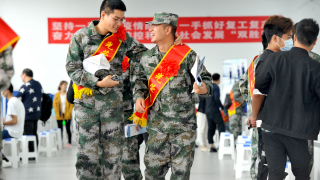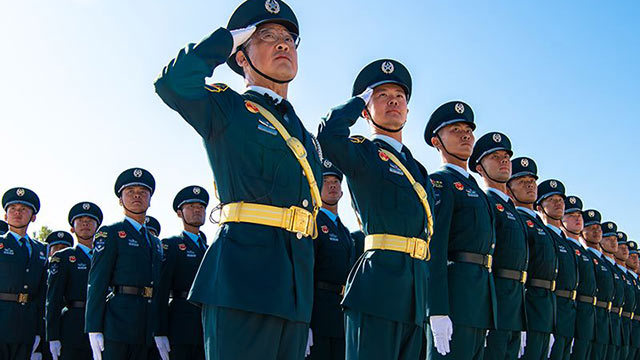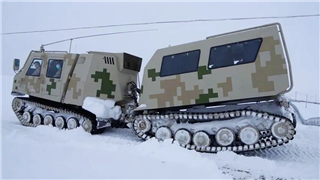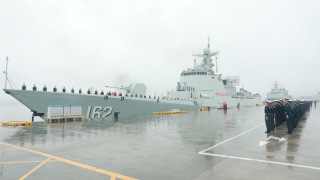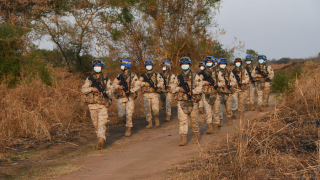By Fang Xiaozhi
方晓志
The US DoD’s recent revelation of a so-called defense plan for Guam that comprises the Standard Missile (SM), Patriot, and Terminal High-Altitude Area Defense (THAAD) anti-missile systems to enhance Guam’s anti-missile capability has captured extensive attention in the international community.
近期,美国国防部首次披露所谓“关岛防御计划”,宣称将构建包括“标准”“爱国者”和“萨德”等反导系统组合而成的关岛防御系统,以提升关岛的反导能力,引发国际社会广泛关注。
The Guam base assumes a vital position in America’s West Pacific military base system and is a strategic pivot for its implementation of the so-called “major power competition”. Recently the country has stepped up fortifying the anti-missile capabilities there on the grounds that Guam may be subject to missile attacks.
关岛基地在美国西太平洋军事基地体系中占有重要地位,也是美国推行所谓“大国竞争”的战略要地。近期,美国多次借口关岛可能面临导弹攻击,持续加强反导系统建设。
Consistent construction of island base cluster
持续建造岛屿基地群
The US military has kept fortifying the military equipment at Andersen AFB in Guam in recent years. Since 2004, it has successively assigned the Expeditionary Bomb Squadron, including B-1B, B-2A and B-52H strategic bombers, to rotate in Guam, making it a normal practice. Starting from 2010, it has deployed the Global Hawk UAVs and F-35 fighters on the island.
近年来,美军不断加强关岛安德森空军基地的军备建设。从2004年起,美军陆续派出远征轰炸中队到关岛进行轮换部署,其中包括B-1B、B-2A和B-52H战略轰炸机群,并使其成为常态。从2010年起,美国开始向关岛部署“全球鹰”无人机和F-35战斗机等。
In addition to fortifying existing bases, the US military has invested to expand new ones following the concept of “distributed operations”. Analysts said when the expansion is completed, the US military may make deployments eastward along Guam, Tinian Island, Saipan, Wake Island and Hawaii to create an island base cluster in which the bases can coordinate with each other with a certain depth.
除加强现有基地建设外,美军还以“分布式打击”作战思想为指导,投资扩建新的基地项目。分析人士表示,完成扩建后,美军或将沿关岛、天宁岛、塞班岛、威克岛和夏威夷岛向东延伸,形成一个相互呼应且具有一定纵深的岛屿基地群。
Establishment of all-round air-defense fire-attack network
构建全方位防空火力网
According to American media, despite the US military’s long-year efforts, the fire attack network in Guam isn’t that perfect and the THAAD anti-missile system has limited capabilities. In a recent interview with American website Defense News, director of the Missile Defense Agency Jon Hill said they will build up an all-round, multi-layered anti-missile fire-attack network on the island.
美国媒体称,美军多年来精心经营关岛,其反导火力网并不完善,其部署的“萨德”反导系统能力有限。近期,美国导弹防御局局长乔恩•希尔在接受美国“防务新闻”网站采访时表示,将在关岛构建全方位多层次的反导火力网。
In the declassified version of the Missile Defense Review released in October 2022, the US underscored the air-defense and anti-missile fortifications in Guam and the necessity to put in place a complete defense system there, calling the island a major military aircraft and ship logistics center and base in the Asian Pacific. The recently passed National Defense Authorization Act for the Fiscal Year of 2023 also said the US will set up a separate agency to evaluate the so-called Guam Defense Plan.
2022年10月,美国发布《导弹防御评估报告》解密版本,重点提及关岛的防空反导建设,称关岛是美国在亚太地区主要的军用飞机和舰船后勤中心及基地,必须在关岛上建立一套完善的防御体系。根据最新通过的美国《2023财年国防授权法案》,美国还将成立一个独立的机构,来评估所谓“关岛防御计划”。
The Guam Defense Plan released this time showed that the anti-missile systems deployed in Guam will consist of the US Navy’s SM-3 and SM-6, US Army’s Patriot-2 and Patriot-3, and the THAAD system. They will be connected through the US Army’s unified combatant command system to form a multi-layered, distributed and mobile air-defense and anti-missile network for Guam.
根据此次公布的“关岛防御计划”,部署在关岛的反导系统将由美国海军的“标准-3”“标准-6”反导系统、美国陆军的“爱国者-2”“爱国者-3”反导系统和“萨德”反导系统组成。这些反导系统将通过美国陆军的综合作战指挥系统连接起来,形成一张多层次、分布式、可移动的防空反导网,为关岛提供防空反导保护。
Possibility to head into a strategic dead end
或走进战略“死胡同”
The US has continuously optimized its overseas deployments, dispatch of elite forces, and distribution of advanced equipment in recent years with the so-called “major-country competition” as its priority strategic goal. On that basis, it has also adjusted the forward deterrence deployments in the West Pacific that rely on the island chain and the forward stationing of heavy troops.
近年来,美国把应对所谓“大国竞争”作为首要战略目标,不断优化海外驻军布局、精锐力量编配和先进装备配发,并据此对西太平洋地区依托岛链、重兵前出的前沿威慑存在方式进行调整。
The latest round of adjustment has seen the US military shift the focus of deployment to the second island chain and pay more attention to Guam’s role as a strategic pivot. At the same time, it is strongly pushing dynamic deployment and trying all means to obtain the right to temporarily use military bases and key infrastructure in Southeast Asian countries and Pacific island countries. All these moves are aimed to spread its forces widely across different geographical spaces to weave a “multi-node, dispersed and resilient” network of bases, and continue to upgrade the integrated theater command capability, thus creating a West Pacific combat system with wide geographical coverage.
在最新一轮调整中,美军将部署重点逐渐转向“第二岛链”,更加重视关岛的战略枢纽作用。与此同时,美军大力推进动态力量部署,通过各种方式获得东南亚国家和太平洋岛国军事基地及重要基础设施的临时使用权,企图将力量广泛分布在不同的地理空间,构建“多点、散布、弹性”基地网,并继续升级战区一体化指挥能力,从而打造广域分布的西太平洋地区作战体系。
While the US intends to enhance Guam’s overall air-defense and anti-missile capability through the defense plan, in reality, it may well make the island more vulnerable in security. Analysts pointed out that if the US, instead of forsaking the hegemonistic mindset, continues to pursue superiority in so-called “major-power competition” by force, it will eventually head into a strategic dead end.
从未来前景来看,美国意图通过实施该计划提升关岛的整体防空反导能力,事实上这可能进一步增加关岛的安全脆弱性。分析人士指出,如果美国不肯摒弃霸权心态,一味依靠穷兵黩武谋取所谓“大国竞争”优势,难免走进战略“死胡同”。
(The author is an associate professor at the School of International Relations, National University of Defense Technology)
(作者系国防科技大学国际关系学院副教授)
